Talking with oneself (or someone else)
Interactive Performance Installation
ANDREA CRNKOVIĆ / GIANFRANCO MIRIZZI
Galerija Filodrammatica, Korzo28/I, Rijeka
31.5. – 6.6. 2019.
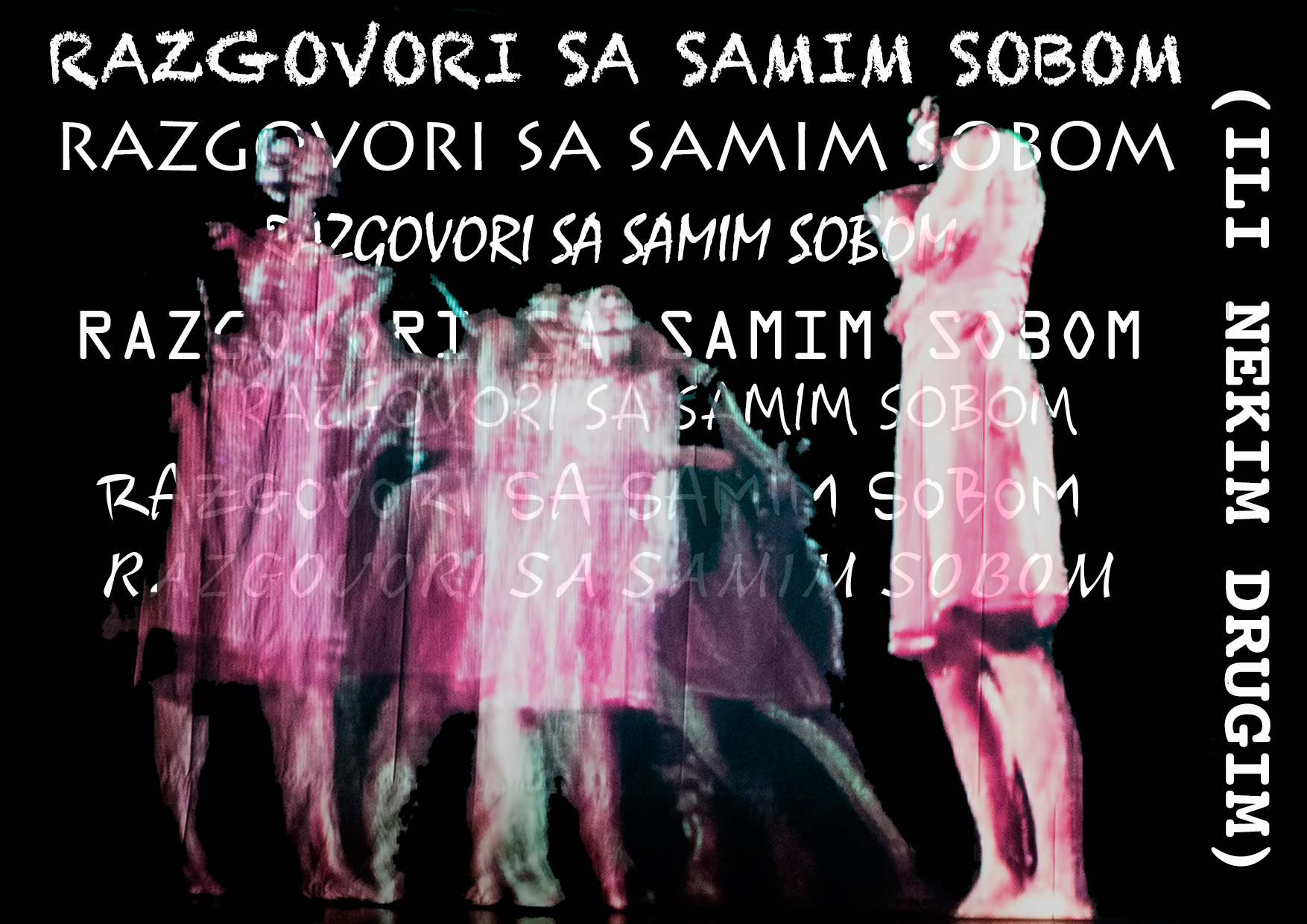



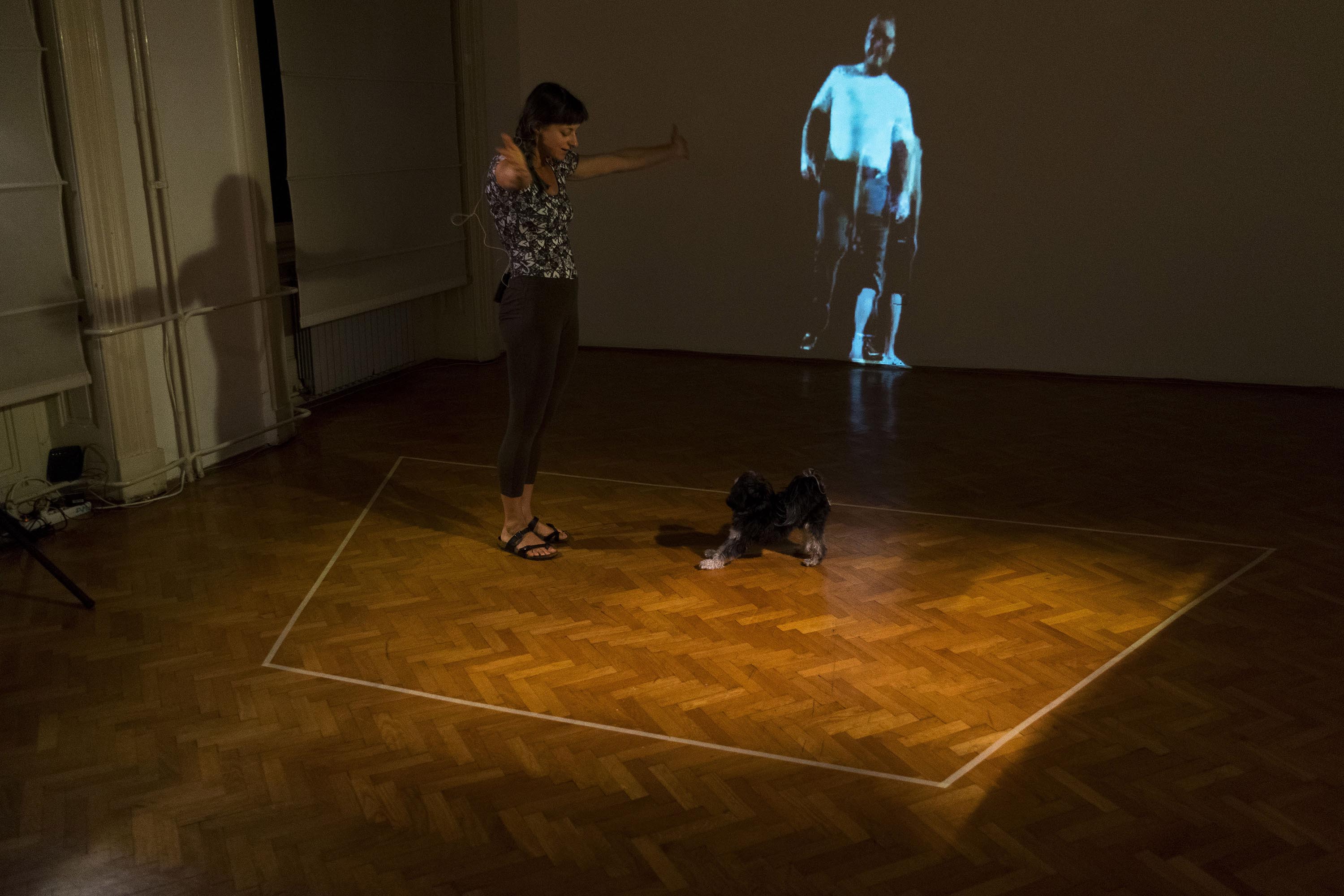
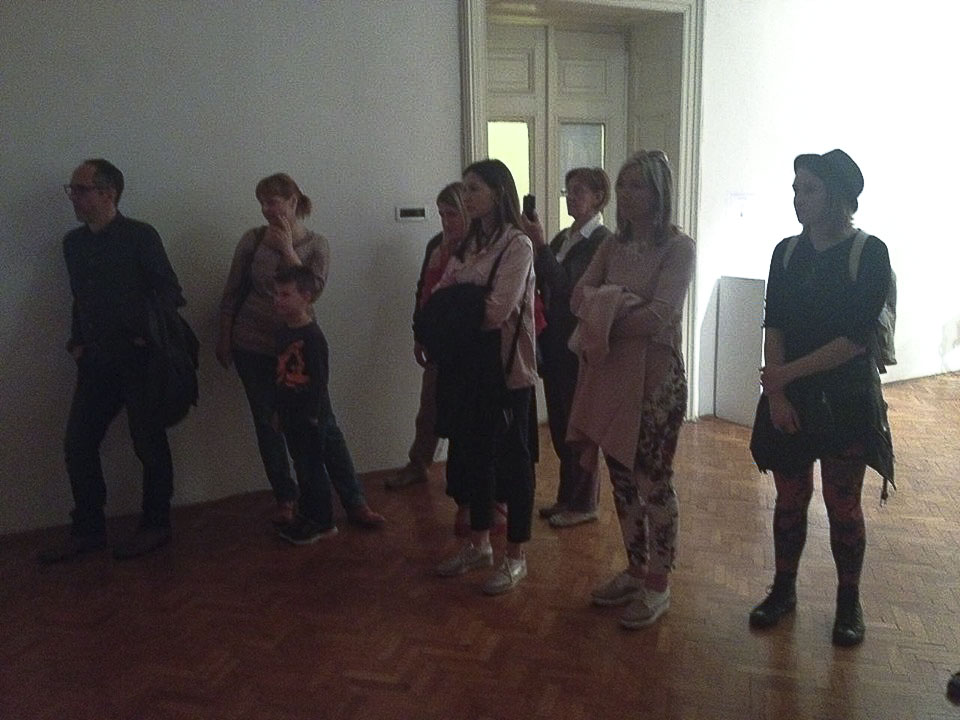



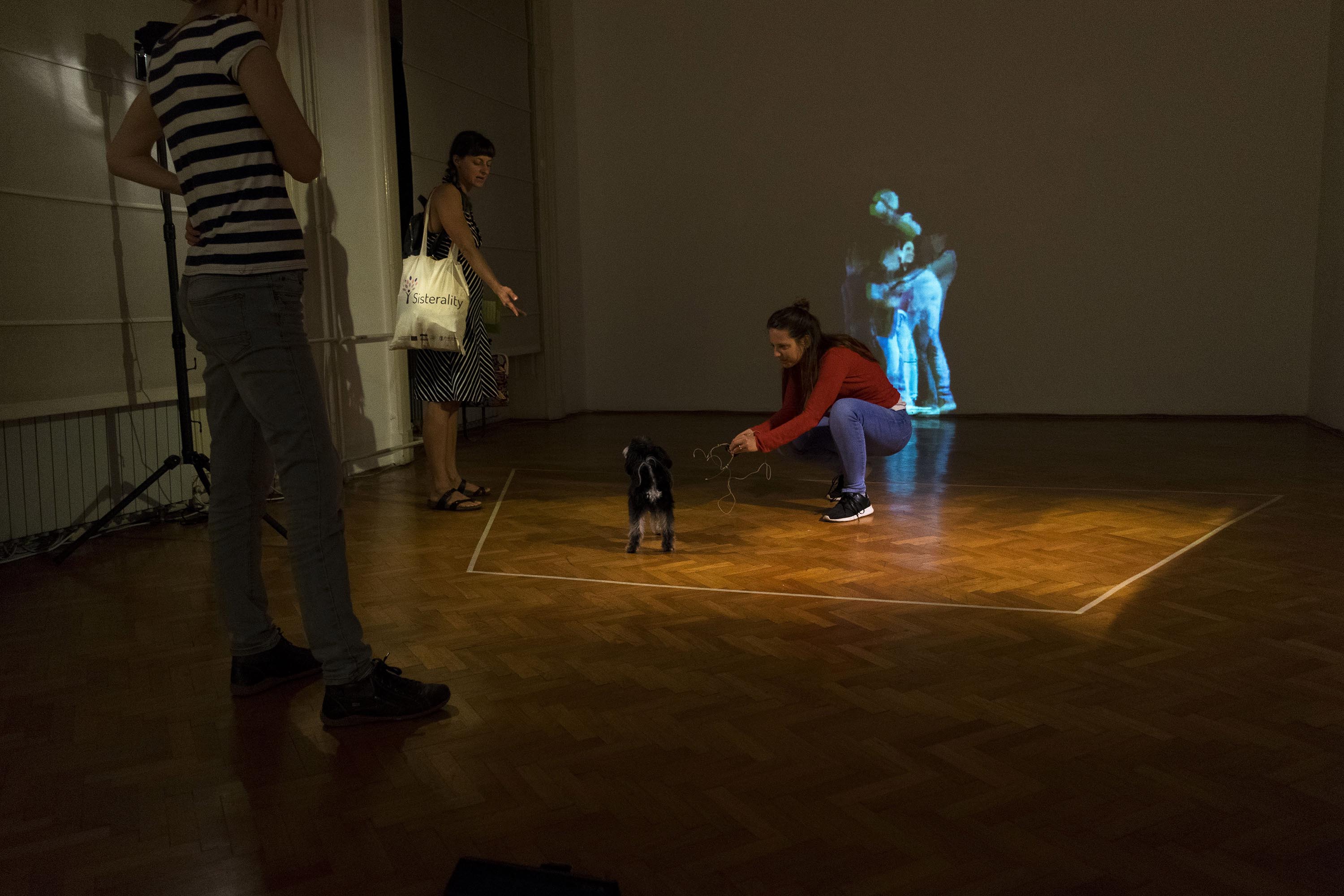
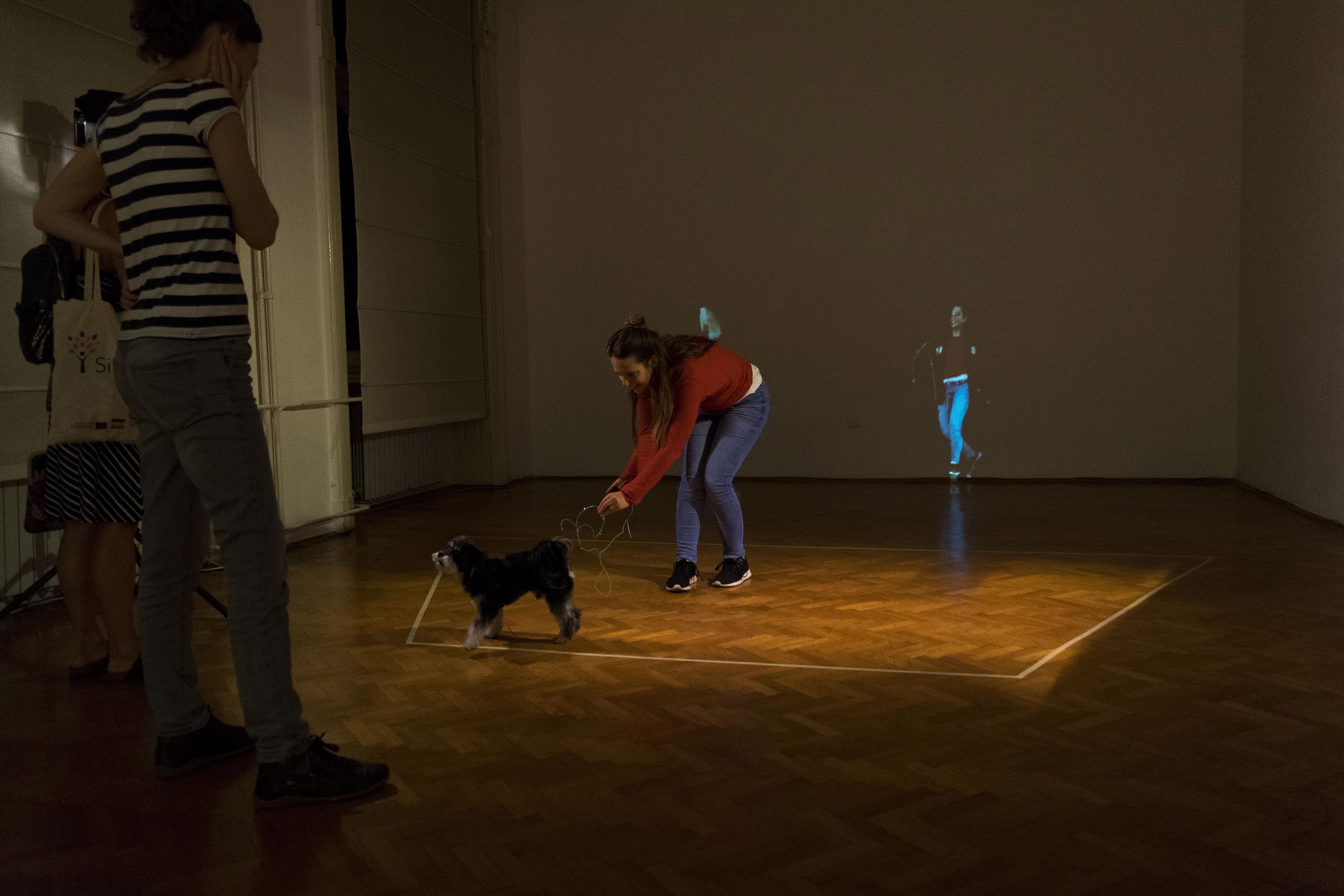

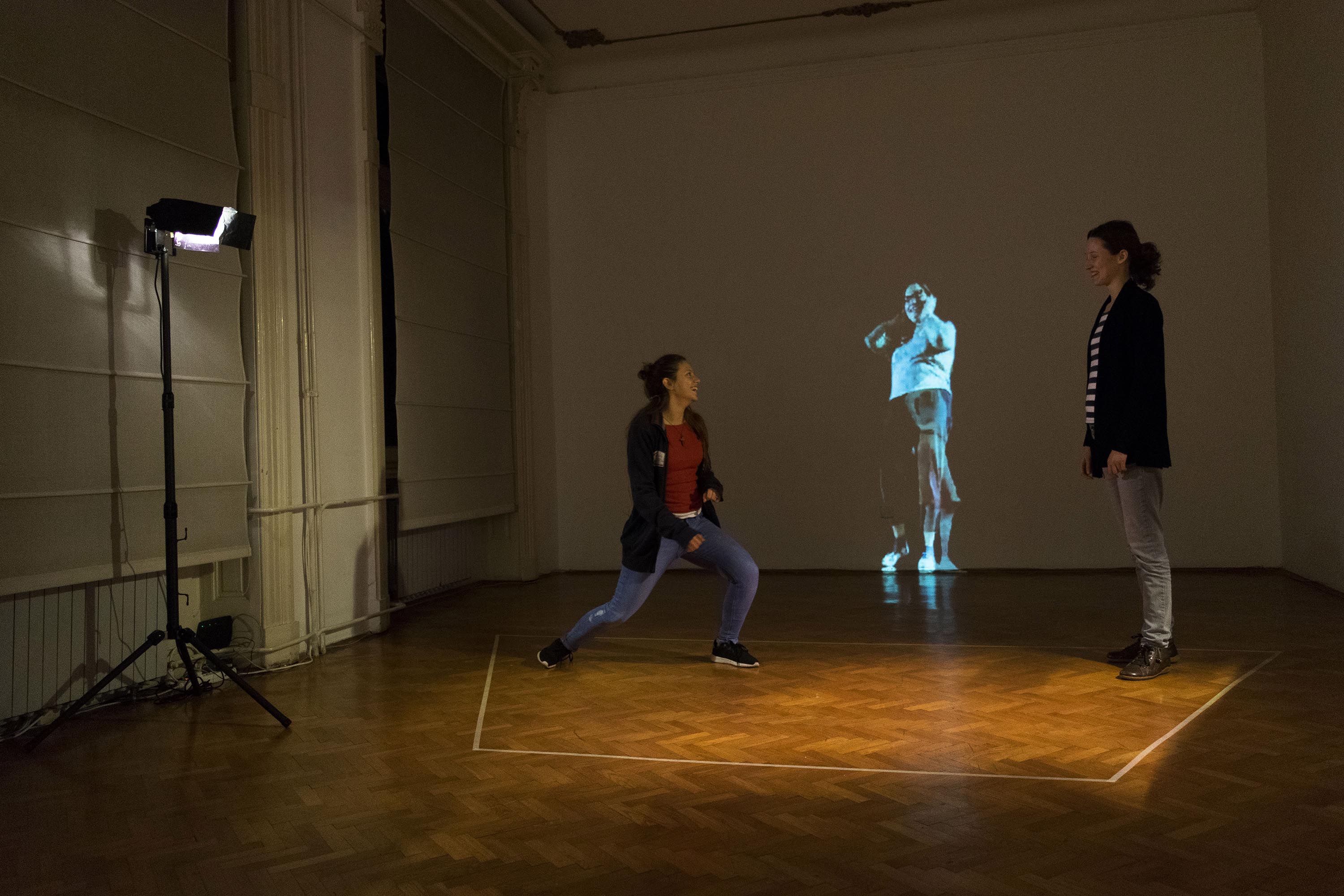
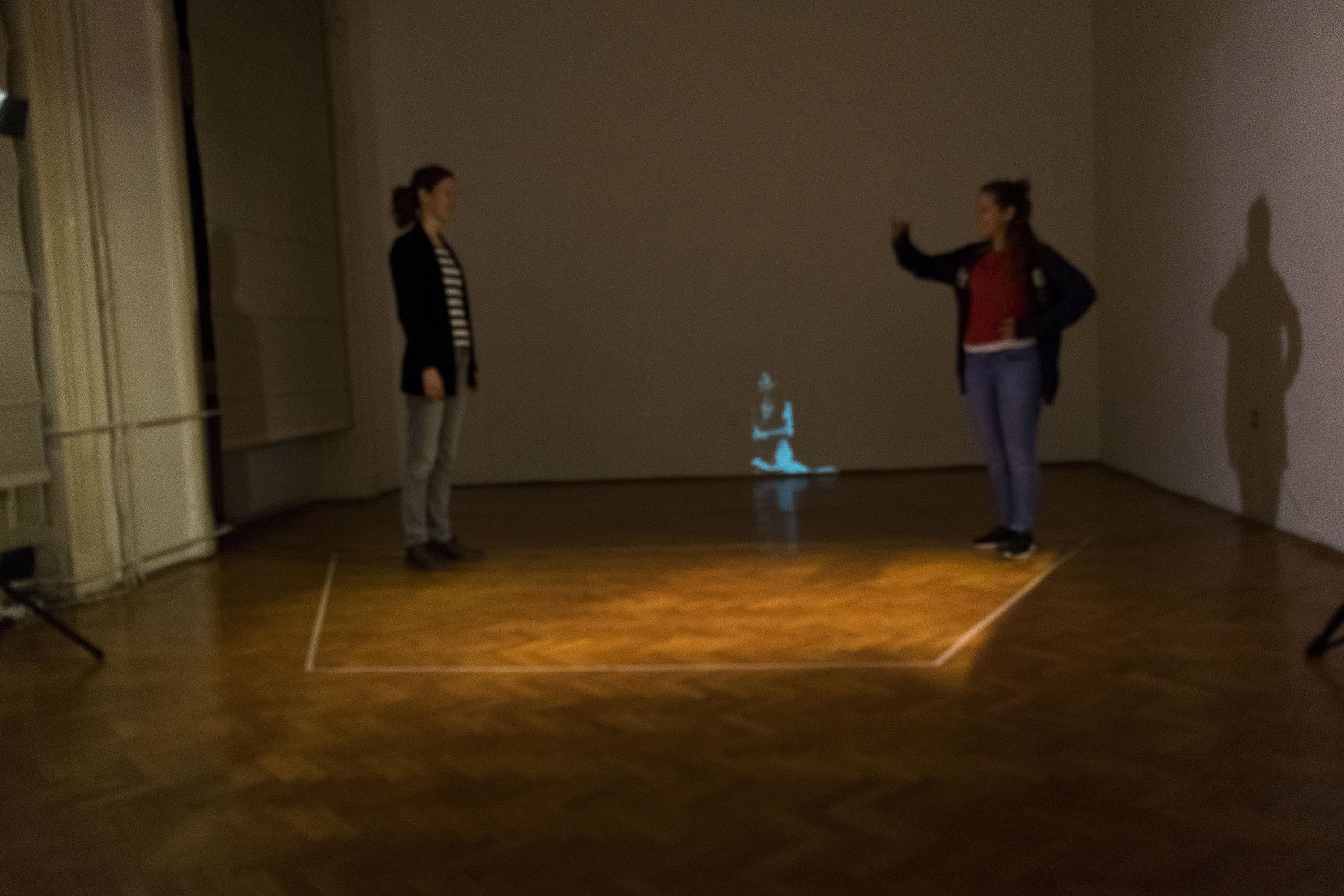


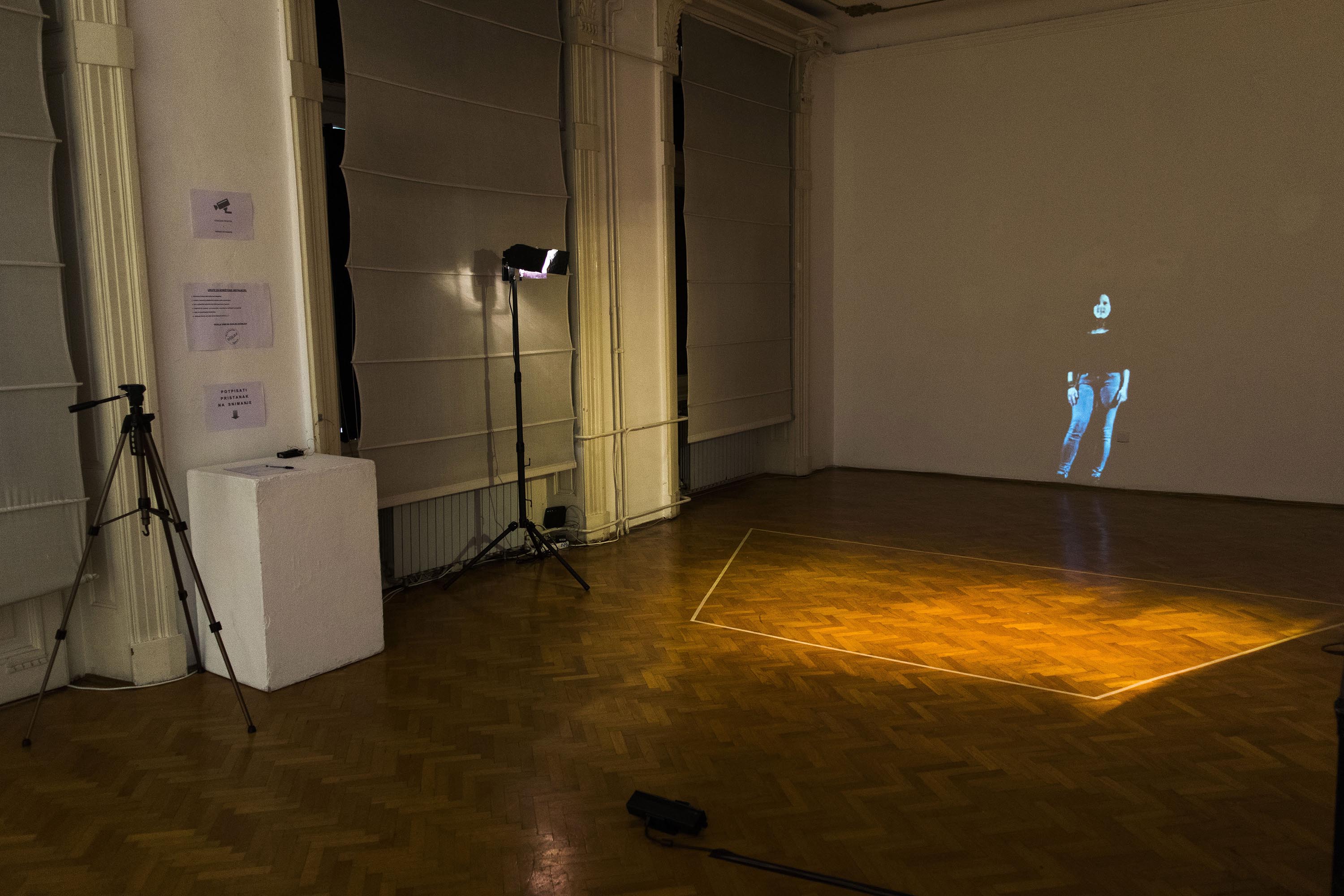


The installation was presented and opened by media artist, associate professor and founder of the Center for Innovative Media at the Rijeka Academy of Applied Arts, Ingeborg Fülepp:
“Andrea Crnković and Gianfranco Mirizzi are an exceptional artistic couple, as those you would meet rarely in recent times, and this is useful and inspiring in all areas of new media art. In a long-term collaboration, they research and realize noticeable projects, in which technical innovation and artistic creation are connected. They achieve technologically sophisticated and complex in content interactive projects. In 2017, they founded ArtTeatar BOUM!, a non-profit artistic organization based in Rijeka, and thus decided to explore the interdisciplinary areas and boundaries of theater and digital arts.
Since their joint studies at universities in the USA and Italy, both have completed numerous independent projects, each in their own field. In the joint author’s work, Andrea Crnković uses her rich international experience as a director, actress, author and educator in the performative part of their projects, while Gianfranco Mirzzi tirelessly explores technological innovations using the extraordinary experience he gained at the Imagining Research Center in Baltimore, center with the most up-to-date content and technologically advanced promotional projects.
The interactive performance-installation Conversations with oneself (or someone else) completes their joint work with a new content, an experiment of the unexpected and a game of chance of visual and sound recordings in the gallery space. The ambiguous meaning of such a realization is a dialogue interesting to all generations, because everyone can choose for himself that segment of participation, which inspires the most, and unexpectedly experiences emotions of both spiritual and physical charge.
Contemporary society is confronted with the unstoppable energy of change, which the individual must face every day. This charge can be constructive, but in many people it arouses insecurity and fear. This kind of artistic performance, in which the audience is not only an observer but also a participant, can contribute to the liberating recognition of community. Sometimes loneliness is just an illusion that can be overcome through art.”
Ingeborg Fülepp
MORE ABOUT THE PIECE:
Interactive performance installation Talking with oneself (or someone else) speaks about alienation, neurosis and our need to communicate. It explores today’s role of technology as an alleged cause and consequence – but also as a means to solve (in a controversial way) – the issues of loneliness.
The piece departs from the idea to externalize the inner dialogues between different aspects of one’s personality, one’s different inner voices that many times are not aligned and are the source of internal conflicts. It also considers ways of engaging in a dialogue with different people in an alternative space, people that we actually don’t meet and maybe never will.
The piece refers to existentialist literature and theatre of the absurd. Themes of oneself, loneliness, meaning of being – or even not being – absurdism and relativism merge with contemporary aesthetics of open work, noise, accumulation, superabundance of information and meanings, notions of chance, and questioning of authorship. Also, implicitly the piece refers to themes of surveillance, privacy vs. public exposure, touching the edges of technological issues in society.
This work is also a formal exploration attempting to intertwine technology and theatre in a way that technology becomes a creative co-creator of the scenes. The piece is intended as an interactive and self-generative video that through computer vision and chance computing composes itself. At the same time it is a device for allowing indeterminate performances and a bystander can freely engage, explore and express the potential of the piece. With the use of self-generated stochastic algorithms that run the projections, it is created an alternative space in which the live performance translates in endless possible variations. The performer and audience members have the possibility of interaction, as well as to change the meanings and course of the performance. The recordings are accumulated, recalled and projected in such a way that a performer is invited to interact with the projection/s and have dialogues with him/herself (allowing to express multiple facets of his/her personality) or with another performer. These dialogues could keep going further on the screen in endless variations even when the performer isn’t interacting any longer with the piece, creating multiple ‘scenes’, multiple meanings and, through chance, unexpected or absurdist variations of the same narrative. It is a moment when technology performs and becomes a creator, a director and takes on a life of its own.
The installation begins with a performance of Andrea Crnkovic, presumably at an opening event, where she performs the initial ‘Talking with oneself ’ part of the installation. A 3D video camera automatically and recursively records a series of different performances over time. The first performance is a monologue. As soon as following recordings are completed and recalled, the projection screen is populated with many different versions of the performer and complex conversations can unravel. This part lasts about 10 minutes and audience/participants act as traditional spectators.
Successively every visitor can engage in performing, following Andrea’s example, or freely follow her or his own drive, interacting or not with the video, creating one or more recordings. The recording starts as soon as someone occupies the field of vision of the camera wearing a headset wireless microphone. There is also a possibility that a performer chooses not to talk and expresses him/herself only through the movement or just presence (if that is the case no mic is needed). Even if there may be more participants in interaction, the experience of other participants/viewers – who aren’t directly involved with the installation – is also relevant, as their individual experience completes the piece. It is a participatory piece that asks for audience’s experience, movement in space, and relation to one’s body, voice, and the need to express oneself.
If there is no one interacting with the installation, the technology completely takes over and composes randomly different variations of the ‘scenes’ on the screen, creating every time different dialogues and meanings, connecting the audience to today’s experience of media voyeurism.
The duration of each performance recorded could be anywhere between few seconds and 5 minutes or more, depending on the performer’s intentions.
The idea for the piece has been devised and partially explored during the research of Interactive technology in performing arts conducted by BOUM! in Rijeka through 2018.
More info at: artteatar.boum@gmail.com
Grad Rijeka


